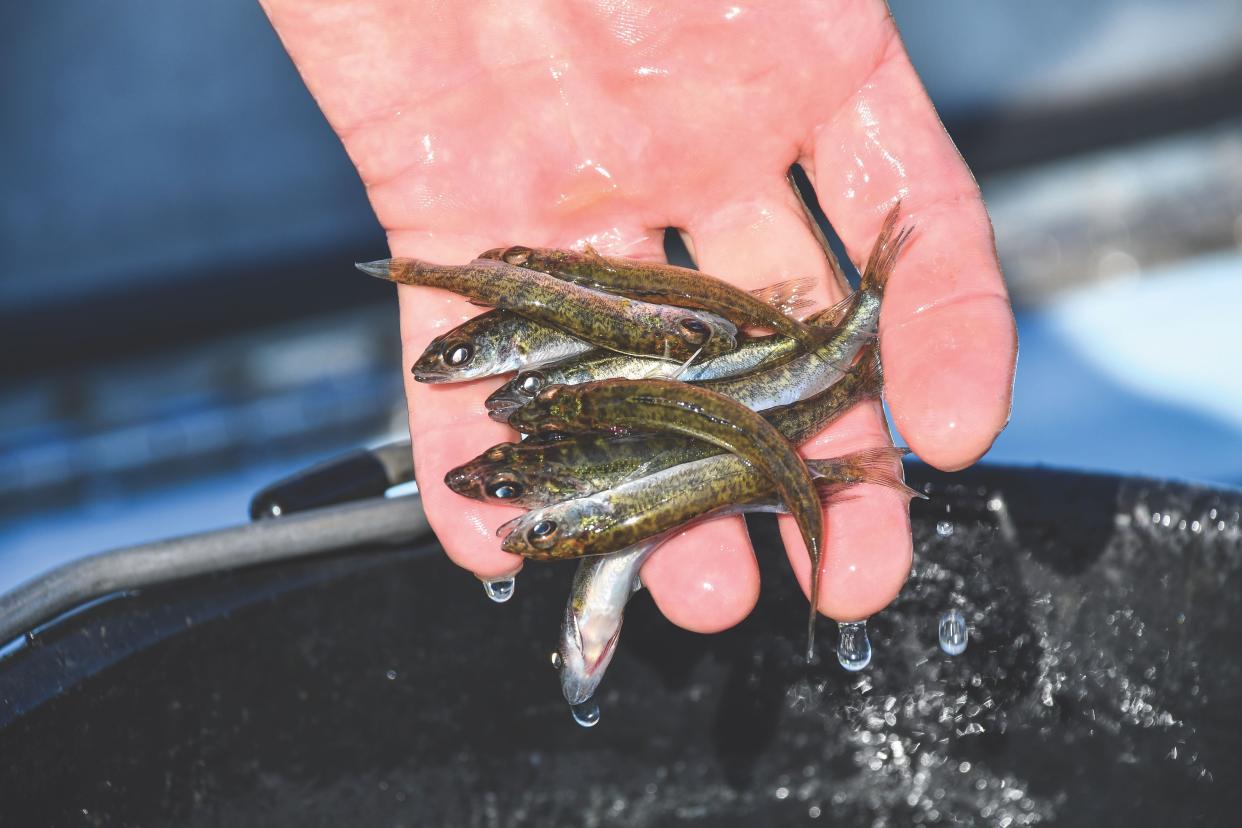How North Dakota fisheries compare to farming

I’ve loosely compared some of our fisheries division work to farming. Planting, stocking and growing fish is parallel to farmers planting crops.You need the right soil, right conditions and weather to grow the crop. Wheat or walleyes. It’s not too far off when you think about it.
So, this spring when farmers were battling snow, ice and cold, the same conditions giving farmers fits were frustrating for fisheries biologists and managers.
Simply having soil doesn’t equate to a bumper crop of wheat and the right water is needed to grow fish to stock.
When fisheries biologists are asked to "stock this lake," it begins a process. The first step in establishing a new lake is to ensure that the public has access.
Next, a small water body may support panfish and not a predator like northern pike. Or, if the water has no fish, they may stock yellow perch, which can thrive on aquatic insects and amphipods when there are no other fish to compete with.
For most anglers, northern pike and perch take a back seat to walleye. Because of the high angler desire and interest, the fishing this summer, and even more so in the future, it’s important to look at how the weather this spring created a unique challenge for fisheries managers and biologists.
Jerry Weigel, Game and Fish Department production/development section supervisor, said taking eggs and milt from Sakakawea and Devils Lake walleye, raising the eggs in Garrison Dam National Fish Hatchery, and later releasing millions of fingerlings in the dozens of prairie walleye lakes and elsewhere is vital to maintaining those fisheries to meet angler expectations.
Weigel said the 2022 walleye egg goal was about 58 million eggs and more than 70 million eggs were harvested.
As usual Lake Sakakawea walleye provided the majority of the eggs in spring. “For much of the last decade, the vast majority of our walleye eggs have come from Sakakawea,” said Dave Fryda, Department Missouri River System supervisor. “Overall, the fishery in Lake Sakakawea is still in good shape. We're able to take ample numbers of quality eggs for use throughout North Dakota.”
Yet, declining water levels on Sakakawea could change things down the road. “While the walleye population is still doing really good in Sakakawea, we have some concerns in the coming years as we’re at the lowest level we’ve been in well over a decade,” Fryda said. “And where we go from here in the next year or two is probably kind of the turning point. We're still in good shape, but if water levels continue to decline, we could see some compromise in the fishery.”
In terms of stocking new waters, biologists will typically assess the size of the lake and measure depth and oxygen levels to see if it can support fish over winter. In some instances, they may set nets to determine what kind of fish, if any, are already present.
Then, like that farmer planning which crops to plant, they use the information gathered to select fish best suited for the lake. While anglers may want walleye or perch, the limiting factors on the water body may bode well for some other species instead.
If, for example, the water is already full of fathead minnows, walleye may be the best option for producing quality fishing in a short amount of time because they grow well in that type of environment.
Once fish are selected and stocked, the lake is left alone for a time to let the fish grow to catchable size. Periodic test netting is done to evaluate survival, growth and possible reproduction.
When the fish become abundant and large enough for anglers to catch, the lake is added to the fishing waters list for anglers to see.
This article originally appeared on Devils Lake Journal: How North Dakota fisheries compare to farming

